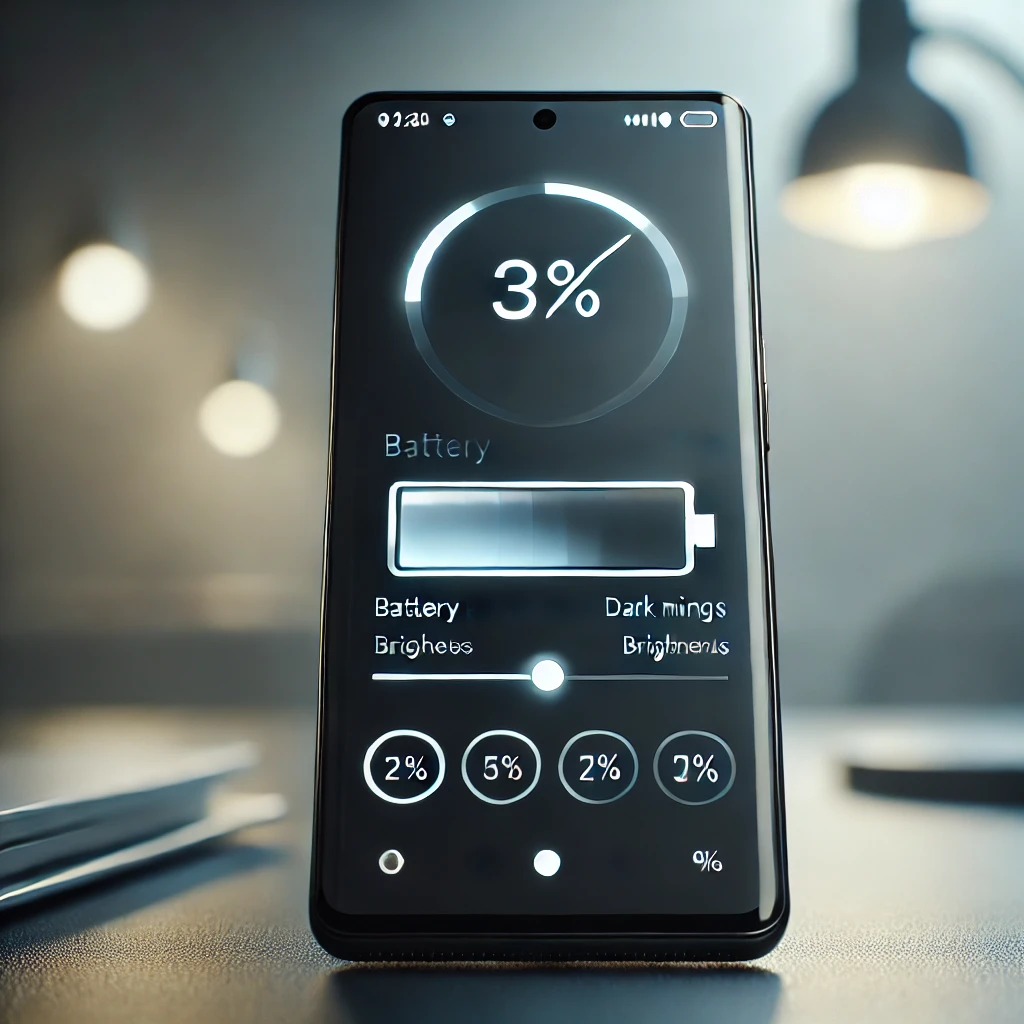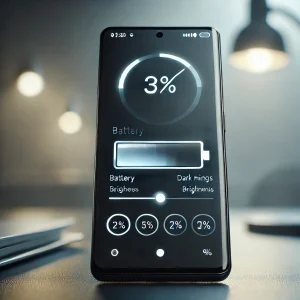
5 Tips for Optimizing Your Smartphone’s Battery Life

5 Tips for Optimizing Your Smartphone’s Battery Life.
In today’s mobile-driven world, keeping your smartphone’s battery running efficiently has become a top priority for users. Whether you’re an iPhone or Android user, extended battery life is crucial for uninterrupted communication, work, and entertainment. This guide provides practical, high-ROI tips on battery optimization, ensuring your device stays powered up when you need it most.
1. Adjust Screen Brightness and Timeout Settings
One of the biggest drains on your smartphone’s battery is the display. The brighter your screen, the faster your battery depletes. Lowering brightness and adjusting screen timeout can significantly boost your battery’s endurance.
Reduce Brightness: Most smartphones offer an automatic brightness feature, which adjusts based on ambient light. While convenient, setting your brightness manually to a lower level can save more power.
Enable Dark Mode: Dark mode isn’t just easier on the eyes; it also conserves battery, especially on OLED displays. With dark mode, each pixel uses less power, extending your device’s battery life.
READ ALSO: How Blockchain Technology Is Transforming Industries Beyond Cryptocurrency.
Shorten Screen Timeout: Adjusting the screen timeout to a shorter duration (e.g., 15-30 seconds) prevents your screen from staying on longer than necessary.
Optimizing display settings alone can provide noticeable savings on battery life, and these changes are easy to implement.
2. Limit Background App Activity
Many apps continue to run in the background, consuming power even when you’re not actively using them. Restricting background activity is an effective way to conserve battery.
Review Background Activity: In the settings menu, you can check which apps consume the most battery in the background. Disable background activity for apps that don’t need constant refreshing.
Limit Location Services: GPS is a notorious battery drainer. Disable location access for apps that don’t require it, or switch to “While Using the App” to prevent constant GPS tracking.
Turn Off Push Notifications: Push notifications keep apps active in the background, consuming power. Limiting notifications, especially from non-essential apps, can have a positive impact on battery life.
Restricting unnecessary background activities will improve both battery performance and phone responsiveness.
3. Manage Connectivity Features
Bluetooth, Wi-Fi, and mobile data are essential features, but when left on continuously, they can significantly drain your smartphone’s battery.
Disable When Not Needed: Turn off Bluetooth, Wi-Fi, and mobile data when not in use. For example, if you’re at home on Wi-Fi, you don’t need mobile data enabled.
Use Airplane Mode When Possible: If you’re in an area with no service or traveling where you won’t be using your phone, Airplane mode disables connectivity and can save considerable battery.
Turn Off Hotspot Function: Personal hotspots can quickly drain your battery. Use this feature sparingly, and disable it immediately after use.
By actively managing your connectivity settings, you can prevent rapid battery drain, allowing your device to last longer.
4. Update Apps and Software Regularly
Keeping your smartphone’s software and apps updated is often overlooked in battery optimization. Manufacturers release updates to improve device performance, often including battery-saving optimizations.
Install System Updates: Each operating system update (iOS, Android) may contain enhancements for energy efficiency. Staying updated helps you take advantage of these improvements.
Update Apps Regularly: App developers also issue updates that can improve performance and reduce battery consumption. Enable automatic updates or check the app store frequently for new releases.
Uninstall Unused Apps: Removing unused apps not only frees up storage but can also prevent unnecessary battery usage from background activities. Fewer apps mean fewer resources, contributing to improved battery life.
A well-maintained device is likely to run more efficiently, extending the time between charges.
5. Use Battery Optimization Tools
Most smartphones come with built-in battery management features that can help extend battery life through optimization.
Enable Battery Saver Mode: Battery saver mode reduces background activity, screen brightness, and connectivity to prioritize battery life. Most devices have options to activate this automatically when the battery reaches a certain percentage.
Use App-Specific Optimization: Some devices let you optimize individual apps, setting restrictions on specific apps to limit power consumption.
Avoid Battery-Draining Settings: Haptic feedback, animations, and live wallpapers add to your phone’s aesthetic, but they also consume extra power. Disabling these can lead to minor but valuable savings.
Battery management settings are effective tools for extending usage on a single charge, and many smartphones allow you to customize them to fit your needs.
—
Additional Battery-Saving Tips
Reduce Notification Volume: Lowering notification sounds or using vibration sparingly can conserve power.
Limit Background Syncing: Regular email syncing and cloud backups can use battery power continuously. Set sync intervals or perform them manually when needed.
Avoid Extreme Temperatures: Exposure to extreme heat or cold can impact battery efficiency and long-term health. Keep your device within its recommended temperature range to maximize battery life.
Final Thoughts
Smartphone battery optimization doesn’t require extensive technical knowledge. With these practical tips, you can enjoy longer-lasting battery life, allowing your phone to keep up with your daily needs. By following these strategies, you’ll not only reduce your battery consumption but also maximize the life span of your device.





